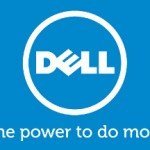The Dell KACE K2000 is a client OS deployment appliance that supports both Mac OS and Windows OS images. The KACE K2000 comes as 1U rack-mounted server or in a VMware virtual machine (VK2000). It runs, as also the K1000 appliance, a version of the BSD OS… for this reason the virtual appliance isn’t supported on Microsoft’s Hyper-V platform.
The key points of this solutions (from Dell KACE site) are:
- Easy to use: train your staff (and yourself) in just hours, and deploy in as little as a day. An intuitive Web-based interface allows administrators of virtually all skill levels to execute advanced administrative duties.
- Comprehensive: automate pre-deployment configuration tasks such as hard drive, BIOS, and RAID configurations. Then automate post-deployment tasks including software distribution and configuration management.
- Affordable: enjoy low total cost of ownership with a hardened, self-healing appliance that has no hardware or software pre-requisites, no incremental professional-service fees and no hidden costs.
The K2000 uses a file-based imaging technology known as K-imaging. One benefit of K-imaging is that when you capture a new image, only data that hasn’t previously been captured is transmitted to and stored on the unit. This technology minimizes the amount of time subsequent OS image captures take, as well as reduces the amount of space you need to store multiple OS images.
The K2000 uses a web-based administration console (similar with the one of K1000, but not fully integrate with it). This console means you don’t have to install software locally on the computer you use to manage OS deployment. The console is straightforward and well-designed. When preparing an OS deployment, you drag and drop tasks, such as disk partitioning and user state migration, into the order you want them completed. The K2000 console streamlines what can be a complicated and arcane task in other products.
The deploy of a new machine is quite simple and works with tradition PXE/DHCP/TFTD methods. One interesting feature is the VNC server that you can use too see the deploy progress.
About the points that can be improved:
- Add Linux in the supported OS.
- Have more integration between K1000 and K2000, like shared users (also without LDAP), shared drivers, use the patches and upgrades from K1000 to update the K2000 images, …
- The workflow management is good (and really better than the one K1000), but still can be improved.
- The ISO management is quite funny… why use a custom upload tool to push the content of the ISO and not simple the entire ISO with a usual file share?
For an intruduction of the KACE suite, see the related post.











